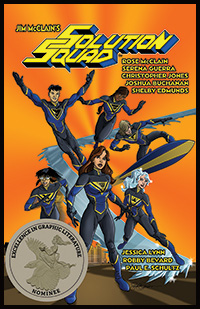Star Trek: Challenger, Part 1
When Star Trek: The Next Generation came out, the merchandise available was unmatched. There were technical manuals, action figures, ship guides, uniform guides, soundtrack CDs, you name it. The comic books weren’t low-budget books produced by Gold Key, but by DC Comics instead. My favorite item, though, had to be the cutaway poster of the Enterprise-D.

If you wanted to run a Star Trek: The Next Generation campaign (and I did), this was the very best tool. Unlike the original series, where the best care really wasn’t taken to keep track of where everything was, the producers of TNG knew how rabid Star Trek fans were in their pursuit of trivia and they kept track of everything. I had collected the action figures, toy weapons, and ships obsessively, and when it came time to run another RPG campaign, I was well-prepared. With the seventh season of the series coming to a close in 1994 and the release of Star Trek: Generations, I proposed a new game to my friends.
The premise of the game was simple. The crew of the Galaxy-class starship, Challenger, would voyage to the Delta Quadrant, and seek information on The Borg, my favorite Star Trek villain. They would be equipped with every device ever introduced in the series, including the the soliton wave drive (“New Ground”), and the experimental phase-cloak (“The Pegasus”). Because Federation use of cloaking technology was forbidden by the treaty of Algeron, there would be a Romulan representative onboard to protect their interests. Challenger was a regular United Nations in space, with ambassadors from every world in the quadrant. This provided intrigue and cloak-and-dagger activity aboard ship, aside from the encounters they had along the way. We didn’t use a formal game system, but used pure storytelling instead. I used every prop I had bought and they were all on the table with one rule. If the toy made a sound, the person holding it had to improvise why the weapon or device was activated in the game continuity. That led to some fun! To create unique characters, we took apart Playmates action figures and switched out heads to create different combinations that could represent the characters.
When it came time to play the game, there was a teaser sequence to set things up, and then I played the theme song on a portable CD boombox. I used the Star Trek: The Next Generation alternate main title theme from the Next Generation score soundtrack. None of the players had ever heard it before, so it was a viable Star Trek theme for an original story! I would even hold up “title cards” with the players’ names and the name of the character they were playing, printed in the same font used in TNG.
Then I would change out CDs to use the Generations soundtrack, because it included sound effects for the Enterprise-D, including door chimes, transporters, warp drive, ambient bridge sounds, and more. I had a remote control for the CD player, so I could just enter the track number that I wanted to play on command.
I tried to pace the overall story in acts, like a television show, even pausing for commercial breaks so people could grab snacks or run to the restroom. We were playing in the upstairs game room of The Griffon Bookstore in South Bend, Indiana. I would hang the cutaway poster, which I transported rolled up in a tube, on the wall before we started game play.
I think the game was fairly successful. I know many people remember it fondly. It was just really hard back then to get people to show up at a game away from home. We were in our 20s and 30s (I was 30) and had a lot of things to do.
This was one of the happiest memories I had of the 90s and I’m glad I fell down this memory hole today.


